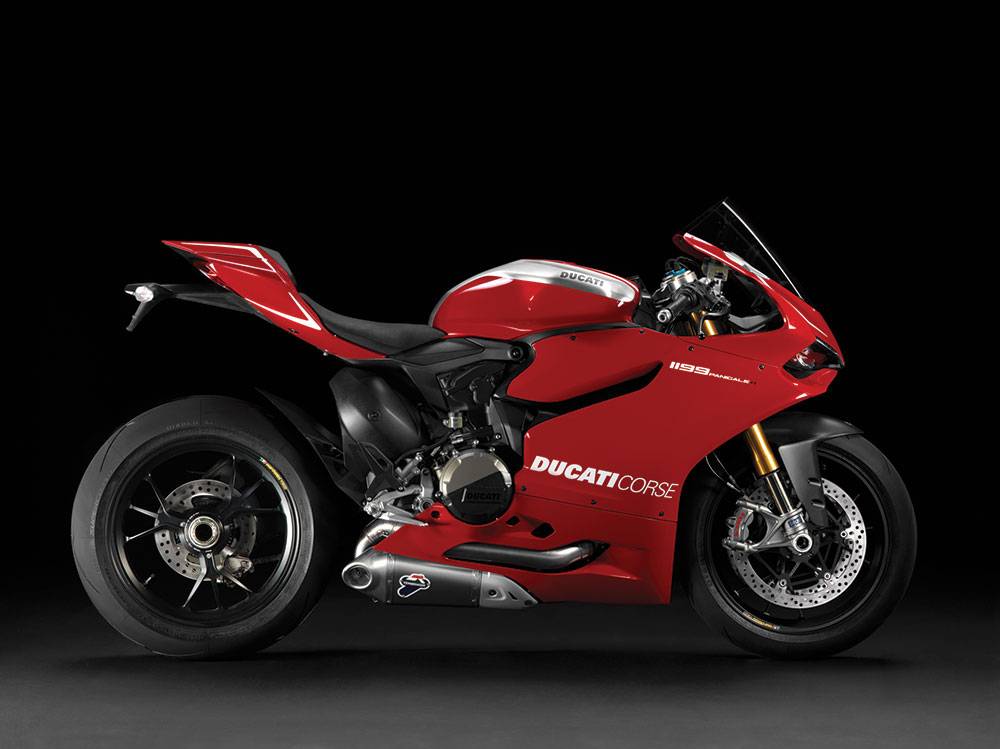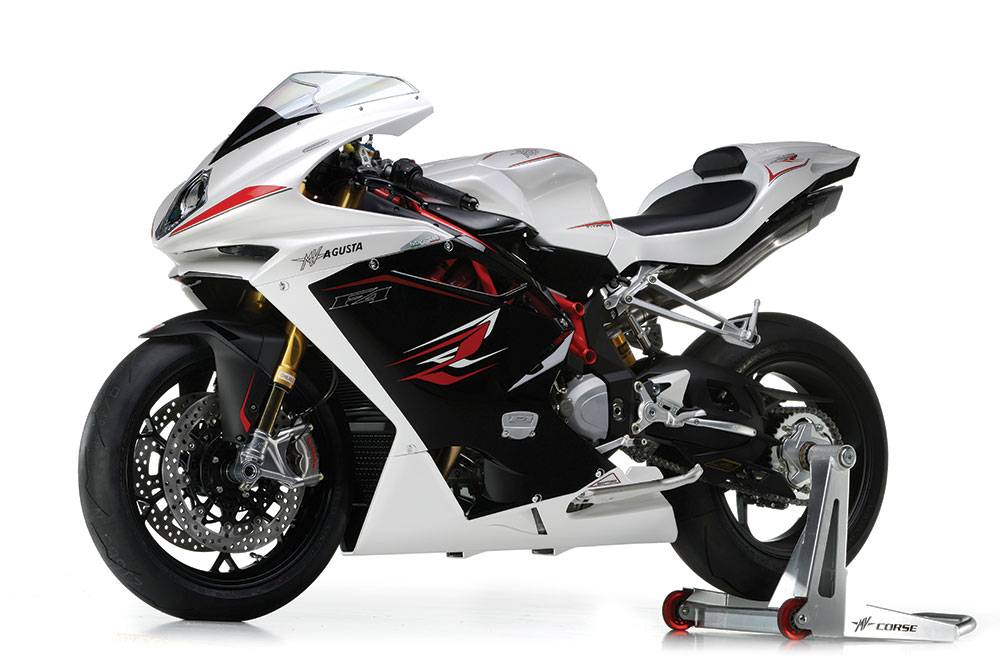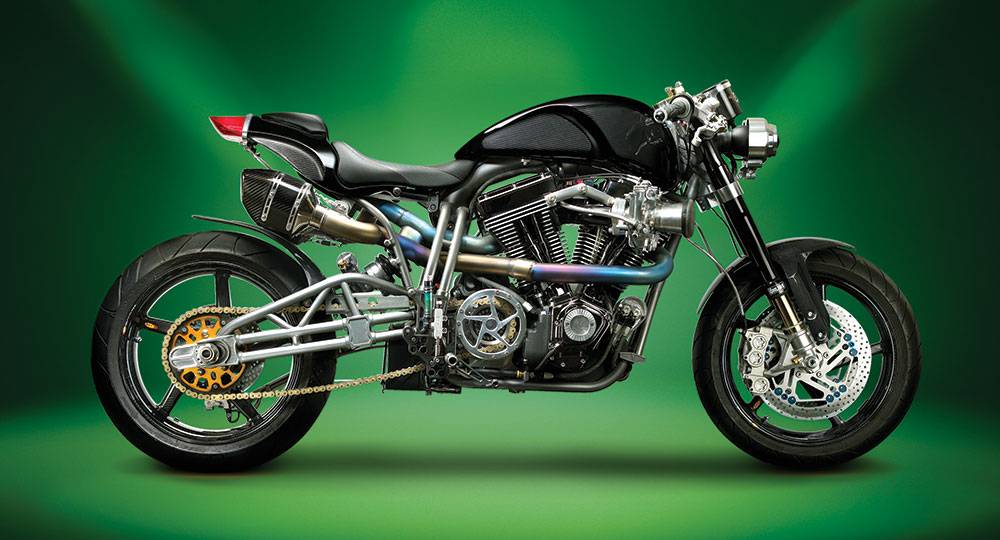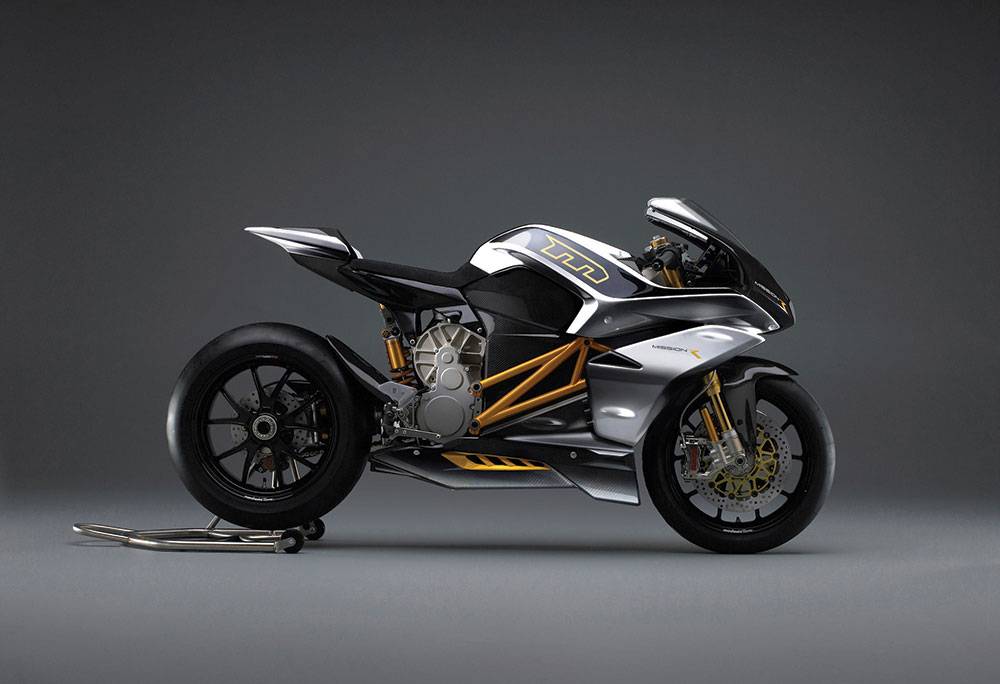Haute Auto: 4 Horses for the Apocalypse
Let’s get one thing straight – whenever someone writes about the “best” or the “top”, such as the world’s best motorcycles, readers offer comments like “You forgot the 1951 Zündapp KS601 Green Elephant”. Well, don’t get your leathers in a twist – this article is about four of the most-interesting, and in many ways revolutionary, motorcycles available today. They vary in price, in concept, in performance and styling but all do what they do quite wonderfully. Let’s also understand that this isn’t about which is “best” as it’s like saying which of your children do you love the most. “Best” is such a subjective criterion, anyway, as you’d have to decide “best at what?” Suffice to say, they all are incredible machines.
One last preface – each of these bikes deserves its own multi-page article as they represent the tops in their fields with outstanding state-of-the-art technology and appearance. Alas, we’re confined to these four pages but do visit their Websites and call on their dealers – it will be worth your time. Just listing these stablemates brings up names both storied and new – Ducati (a company formed in 1926 but which didn’t enter the motorcycle race until 1950) and MV Agusta (founded in 1907 as an aeronautics company which added motorcycles in 1945), the two Italian Stallions, full of whine, growl and with a voice heard far and wide. Then there are the Ecosse and the Mission, American upstarts which approach their creations with far different perspectives: the Ecosse is all milled and forged, replete with brute strength and roar, and the Mission is as quiet as an electric motor (no surprise there) with cutting-edge electronics and accoutrements with immediate torque. As we prepare to delve a little deeper in these four souls, here’s something to ponder – although very different, each of these bikes can get you arrested anywhere in North America, and in most other parts of the world, in under four seconds. If you are planning a world tour on one of these rides, better learn how to say “But I am an American citizen!” in the language of your host countries.
Looking back, it seemed like motorcycle design breakthroughs didn’t occur until relatively recently. Like some other forms of transportation, they really didn’t change all that much in the period from inception (just before the 20th century) until perhaps the 1960s, as apparently motorcycle makers mostly seemed content merely to evolve. But then came the revolution! What had been mostly a one- or two-cylinder world became populated with fours. What had been a mechanical drum brake segued into hydraulics and then disc brakes front and back, now with anti-lock brakes and anti-dive forks. While older bikes required a hearty soul to kick-start them, the need for that skill disappeared with electric start. And don’t get me started on electronically-actuated and –controlled suspensions, engine mapping and the like. So with all of the changes from the past forty years, how do you make something the moves the needle in today’s world? Behold the four amazing motorcycles below!
[highlight_text]Life may begin at 30, but it doesn’t get real interesting until about 150[/highlight_text]
Two are sleek Italian models. One is custom built in Colorado using bespoke craftsmanship. And one is a product of San Francisco and the high-tech world of electric motivation. Each is unique and a total blast to ride. There is no “best” here as they have different purposes (and heritages). But each is a head-turner and a neck-snapper and remarkable in its own way. And, as one indicator of success, I was very reluctant to part with each at the end of my test run.
It’s doubtful that Sr. Ducati and his four sons, who co-founded the company, could have envisioned the super-quick high-tech bikes of today, especially their Ducati Panigale R (www.ducatiusa.com), the ultimate Ducati road warrior. (“Panigale” is that section of Bologna, Italy, where Ducati is located.) Look at what this bike offers – in round numbers it serves up almost 200 horses(!) and a top speed fast approaching 200 MPH, electronic suspension and engine mapping, carbon fiber bits aplenty and even titanium connecting rods, screaming at its 12,000 RPM redline – it’s apparently the most powerful two-cylinder engine on the planet, tucked neatly into a package weighing an incredible 364 pounds (dry). What an amazing triumph of engineering. This was the first bike I rode of the group and, when people asked me to describe it, all I could say was: “This bike is a racehorse that says, ‘I don’t walk, I don’t trot and I don’t canter but if you want to full-on run-for-the-roses gallop, climb aboard!’’” The raison d’être of this bike was to homologate the model (that is, make a production-ready bike) which would allow its full-race version to qualify for World Superbike racing, yet this road-going R is every bit as quick as virtually any bike on that circuit. Happy enough around town, though somewhat twitchy (due, no doubt, to my calling forth the “corsa” [track] settings), the bike sings at speed, with tons of torque (almost 100 foot-pounds!) and terrific Brembo brakes. (Were this a technical article, I could go on for pages about the engineering trickery incorporated in to this great ride but this is an experiential comparison.) The Panigale R in bright red is simply gorgeous (one thing for sure – the Italians know red). Though I clearly am not their target market (younger, more flexible and even braver souls apply here), it was a terrific fun and well worth the price of admission (base price about $30,000).
MV Agusta F4 RR (www.mvagustausa.com) is the other Italian in this stable. Like its countryman, the company entered the industry after starting elsewhere. Not sure how one moves from airplanes to bikes but I, for one, am very, very glad that they did. (The “MV” part comes from Meccanica Verghera, roughly the “mechanics of Verghera”, the area where the motorcycle business was started — no doubt the MV part was added to distinguish it from the Agusta airplane company.) The first thing that grabs you is the pipe-organ at the back – the sinuously twisty tangle of four exhaust pipes that terminate in a quartet of rectangular trumpets just below the taillight. And the second hit comes when you fire up this baby – the sound of four hearts beating at once. And if it still hasn’t grabbed you, wait till you hit the 13,500 rpm redline – clouds part, angels sing and all is right in the world. It’s a fun, flickable and different take on superbike creation. With infinitely adjustable this and that (engine mapping, suspension tweaks and the like), terrific Brembo monobloc brakes and more, it’s easy to switch between cruising and full-out track trim. Utilizing similar technology to that of the Panigale R (though, at a base of about $25,000, it’s somewhat less expensive), the bike boasts lots of high-tech materials for strengthening and lightening and delivers exceptional performance (no surprise here, as it’s also a homologation project for the F4 RR racing bike). I’m still not the target market (insert additional self-deprecating language here) for bikes of this caliber – although it has good breeding to allow for a great cruise, it really begs for a rider who knows how to wring it out and strut its stuff. Maybe, after I complete my Reg Pridmore soon-to-be-offered Walter Mitty Superbike Course….
[highlight_text]They call it “The Ultimate Industrial Sculpture” and no one can quibble[/highlight_text]
Let’s pause briefly here to reflect on these two Italians. Something interesting was how much comparing the F4RR to the Panigale R reminded me of online dating. (Ponder that for a second!). The numbers and stats for these two bikes are quite similar but riding them seemed so amazingly different. Call it “chemistry”, I guess. The Ducati is such a looker with performance to match, it also was great fun to ride (especially the throttle blips). On the other hand, being a sucker for a good sound, I loved the rock symphony that the F4 RR trumpeted out yet and the seamless way that the four-banger spooled up. Weight, power, performance and more pretty much line up but only seat time will show you which is your favorite.
The Ecosse (www.ecossemoto.com) is rolling art. They call it “The Ultimate Industrial Sculpture” and no one can quibble. I call it flat-out gorgeous, a wonderful fusion of art, form, function and sound. Creator Don Atchinson is a master with machining and his bike exudes cool – James Dean’s and Steve McQueen’s heretofore-unknown third-triplet sibling would buy this bike. What hath Don wrought? Who has carbon fiber wheels and milled stainless and even titanium aplenty on a motorcycle? No item was too mundane to miss out on his metallurgical mastery. Yet it’s not just a show king, by any means. With around 135HP and over 140 foot-pounds of torque (at the rear wheel) motivating about 460 pounds of heft, it’s quick by anyone’s standards. It feels shorter than the numbers indicate as it’s quick in the corners and rockets on the straights. To the extent that there’s any obvious heritage, I would have to say that, to the uninitiated, it looks somewhat like a Harley – stance, V-twin, and all. However, after a few seconds of viewing, you can tell that this is something special and unique. It was as if Don explored every single component and said “How can I improve this and make it more special?” When the Guggenheim is ready to put a new millennium motorcycle on the wall, as static art, this should be its first choice (and apparently Forbes agrees). When asked to summarize my experience with this bike, I say that it was like riding an explosion (but I mean that in a good way), with a reported 0-60 time of 2.6 seconds and a top speed of 190 MPH. It’s a man’s bike and you’re aware of it at all times. With an exhaust note that says “You’ll never catch me”, it snarls at speed and booms on up- and downshifts. A great amalgamation of beauty, speed and sensory overload, the Ecosse gives the rider a feeling of accomplishment, no doubt exclaiming at the destination, “Wow, what a ride!” Ecosses are priced from $90,000 for the Heretic to $300,000 for the Founder’s Edition (“FE”) Titanium series; “my” FE Race model (pictured here) is listed at $107,000.
The Mission RS (www.mission-motorcycles.com) is what would happen if Steve Jobs and Elon Musk liked motorcycle riding and decided to build a bike. Leaving no electronic trick unplayed, company president Mark Seeger shows his lineage, which included a stint at Apple. Here’s a bike that undoubtedly will draw favorable comparisons with Tesla. High-tech, of course, but wicked-fast with some clever items which many riders will want: camera discreetly mounted in the headlight area which does a thirty-minute continuous loop but which also can be started and stopped by the rider using a handy handlebar switch, with options to download to an onboard disc, the rider’s iPhone or even upload, during the ride, to a private Website so friends and family can see location, speed, angles of attack and more on the fly (younger readers may want to forego that feature and, at the same time, perhaps unfriend their parents, too). There’s even the ability to upgrade software while the bike is charging at home overnight. The built-in navigation system gives turn-by-turn directions that are surprisingly easy to read while riding (a helmet with heads-up display reportedly is in the works). What more could you want? Power, torque, speed? Check, check and double check. The RS horsepower is listed at about 163 and the torque at 133 ft/lbs, but it feels MUCH more powerful than those numbers would indicate, no doubt due to the instantaneous nature of electric propulsion and the lack of any auditory feedback that you are accelerating at warp speed (claimed 0-60 is under 3.0 seconds, claimed range is 140 miles (230 in the city) and I wouldn’t be surprised if Mission works out a deal with Tesla for almost-immediate charging). At MPH rumored to be well north of California’s limit (well, someone’s got to test the bike and, besides, the stats say it will do “150+”), it felt amazingly strong even then. Yet, with only a three-minute pre-flight, this leading-edge bike was as easy to ride as any conventional motorcycle. But perhaps the most unusual thing is to experience great speed, amazing acceleration with no noise and virtually no torque curve. Expect big things from this upstart challenger to the status quo. Depending on how it’s equipped (different battery size, other options), Mission’s R (pictured here) and RS models run from the $30,000 range up to about $75,000; “my” RS (see photo) was about $56,000.
[highlight_text]Four wheels move the body. Two wheels move the soul[/highlight_text]
Now far be it for me to equate superbikes to pornography, but the venerable US Supreme Court justice Potter Stewart validated the comparison concept in a porno case, which we can paraphrase here – after reading the resume of each, one might not know which bike he would rather own but he will know it when he experiences it after the ride. And the really good news here – you can’t make a bad decision. It would be tough to explain the differences between these bikes as they all are exhilarating to ride and boast breathtaking performance in a beautiful package. Were greenbacks and garage space in great supply, all would be at home in my garage. So now you know the answer to the riddle: “What has eight wheels and almost as much power as a Bugatti Veyron?” As my playtime with this brace of bikes came to an end, each one left me sorry to return it to its rightful owner, which is a good thing, I guess – leaving them wanting more is the best way to start a relationship, no?
















